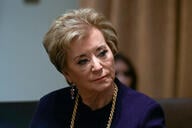You have /5 articles left.
Sign up for a free account or log in.
It’s not only the country’s largest endowments that are seeing poor returns this year.
Preliminary data released Thursday from an annual survey of college and university endowments conducted by the National Association of College and University Business Officers and Commonfund show that endowments essentially held flat for the 2012 fiscal year (which ended on June 30), with the average return being a loss of 0.3 percent.
The announcement of tepid endowment returns by some of the country’s wealthiest institutions earlier this month, particularly Harvard’s announcement of a 0.5 percent loss on its $32 billion endowment, presaged the NACUBO survey results. But even those weak returns appear better than the rest of the sector. As in past years, colleges with endowments of more than $1 billion saw the largest returns, averaging growth of 1.2 percent.
Within the data, which were collected from 463 U.S. colleges and universities, the best return was a gain of 15.8 percent and the worst was a loss of 9.5 percent.
The small average loss marked a reversal of last year's optimism about endowments, when returns averaged 19.2 percent. Back then administrators were wondering whether returns were coming back to pre-recession levels.
The weak returns, and a growing belief among higher education leaders that institutional investments are not going to return to the robust levels they saw before the recession, hint to many in the sector that, like so many other forms of university revenue these days, endowments will face increased uncertainty in coming years. That fact could complicate budgeting at the small number of institutions that depend on endowments for a large component of their budgets as well as the programs at other institutions that are funded through endowments. It could also deter institutions from pursuing endowment growth as a way to mitigate other budgetary problems.
The weak returns are partly the result of market turbulence in the stock market between July 2011 and June 2012 (the survey does not include any performance after June 30, 2012). The autumn was particularly uncertain, driven by the U.S. debt ceiling debate, the negative revision of the country’s credit rating by Standard & Poor’s, and uncertainty about the stability of the euro. Further problems in the euro zone revived the turbulence in the spring.
The Wilshire 5000 index, which measures domestic equities, grew about 3.7 percent over the fiscal year, while foreign developed and emerging markets dropped about 14 and 16 percent, respectively.
According to the survey’s preliminary results, those institutions with the largest endowments saw the best returns. Such institutions tend to have more diversified portfolios, including a larger chunk of assets in "alternative investments" such as hedge funds, real estate, and private equity, as well as full professionalized investment staffs. Those factors help such institutions hedge against losses.
“The data for FY2012 as well as for all longer periods confirm the historic pattern of outperformance by larger institutions, chiefly those with assets in excess of $1 billion,” said NACUBO President and Chief Executive Officer John D. Walda and Commonfund Institute Executive Director John S. Griswold in a joint statement.
At the same time, institutions with endowments of less than $25 million fared the second best of any of the survey’s categories, probably because such investments are more conservative.
The survey’s findings continue a distinct trend in higher education toward greater asset allocation in “alternative strategies.” For institutions with endowments larger than $1 billion, such investments made up 59 percent of their overall endowment. For institutions with endowments between $501 million and $1 billion, such allocations made up 49 percent.
The unpredictable nature of returns since 2008 has given many in higher education pause about the long-term prospects for endowment growth. Small returns make it difficult to keep up with inflation and still generate a substantial payout. In recent months, several colleges have revised downward their expectations of long-term endowment growth, one of the assumptions on which they base their future budgets. The result could be fewer expendable resources for endowment-funded initiatives or an increased demand on tuition revenue or other revenue streams.
Institutions base their spending rate on several years of returns. This year the average effective spending rate for a group of 215 institutions reporting such data was 3.9 percent, down from 4.6 percent last year.
Earlier this month Grinnell College, which last year had an endowment valued at about $1.5 billion that generated about 50 percent of the college’s budget, announced that it was seeking to diversify its revenue stream to become less dependent on endowment returns.
Final results from the survey, for which NACUBO and Commonfund will likely gather data from more than 800 colleges and universities, will be released in January. Differences between preliminary data and the final report typically do not differ significantly, but the final report will include more details.




